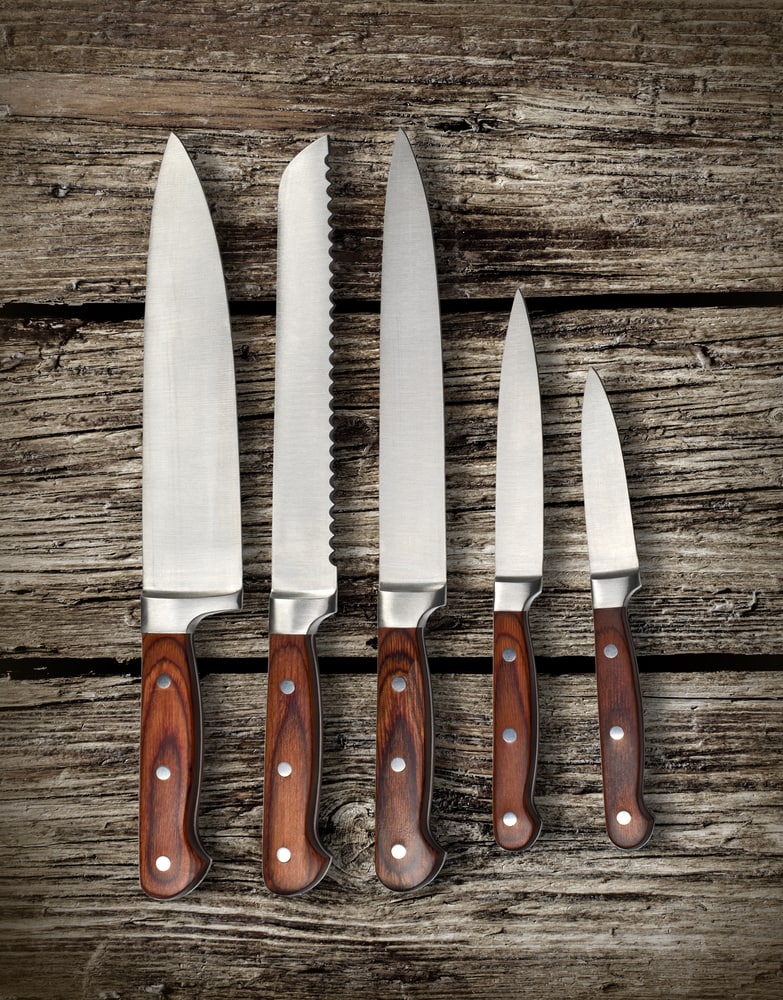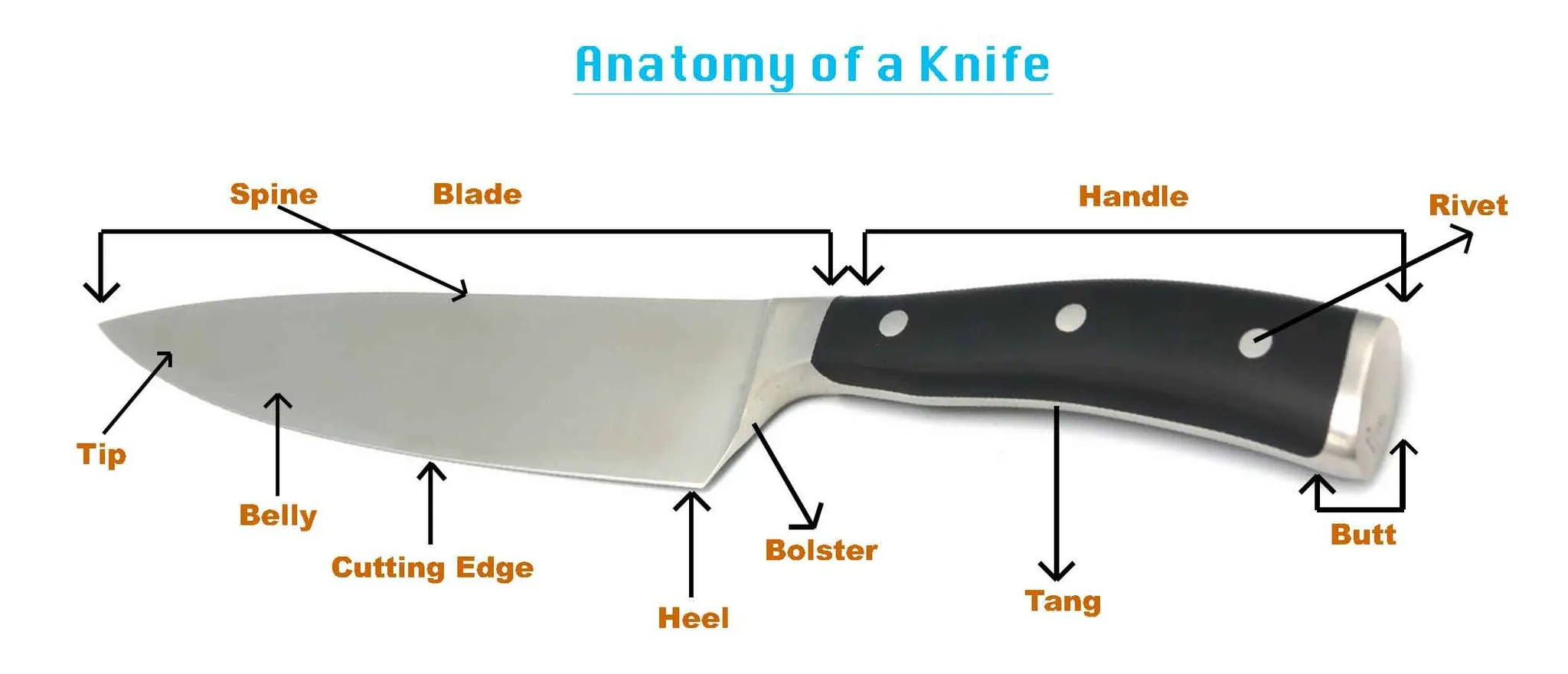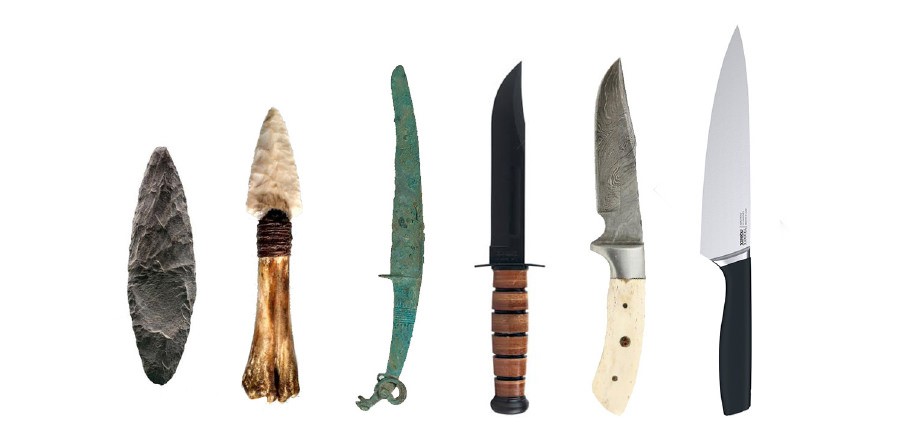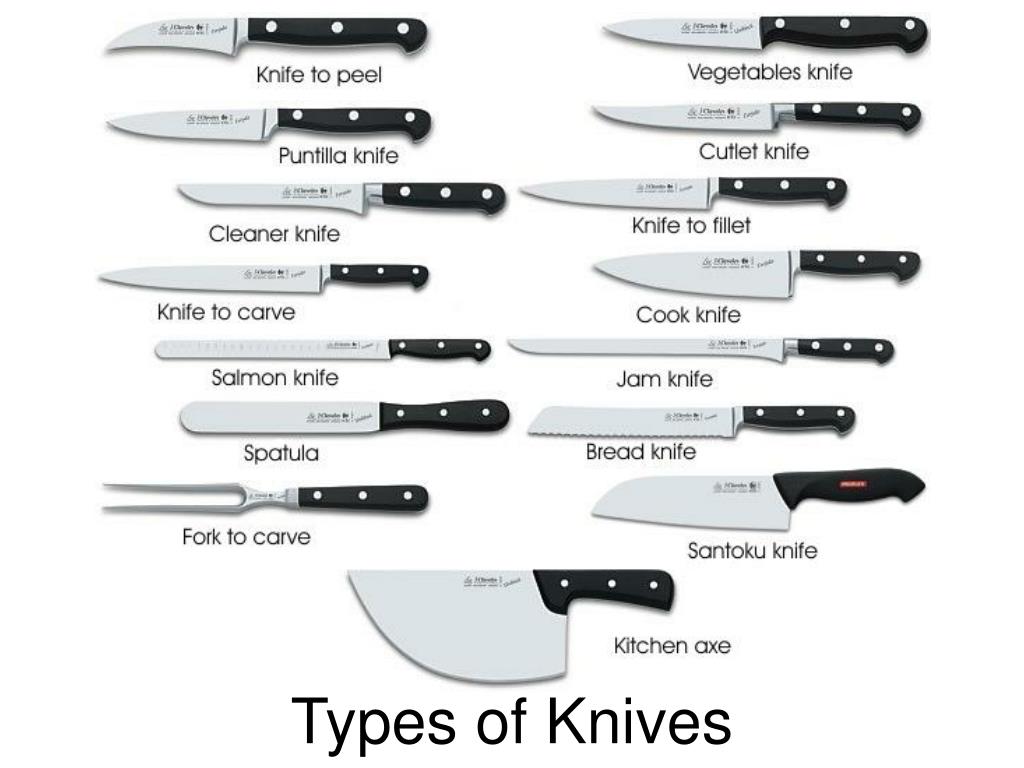1. The Anatomy of a Kitchen Knife: Understanding Design and Functionality
A kitchen knife may seem like a simple tool, but its design and functionality are much more complex than meets the eye. Understanding the anatomy of a kitchen knife is essential for any home cook or professional chef. By breaking down the different parts of a knife, you can gain a better understanding of how it works and how to choose the best one for your needs.
The blade is the most crucial part of a kitchen knife. It is responsible for cutting, slicing, and dicing your ingredients. The shape, size, and material of the blade all play a role in its functionality. The handle, on the other hand, provides a comfortable and secure grip for the user. The tang, which is the part of the blade that extends into the handle, also affects the balance and weight of the knife.
Other elements of a kitchen knife's anatomy include the bolster, which is the thick part of the blade that connects to the handle, and the heel, which is the bottom part of the blade closest to the handle. Each of these components plays a crucial role in the design and functionality of a kitchen knife.
2. The Evolution of Kitchen Knife Design: From Ancient Times to Modern Day
The design of kitchen knives has come a long way since the earliest civilizations. In ancient times, knives were made from flint, obsidian, or bone and were primarily used for hunting and food preparation. As societies developed, so did the technology and materials used to create knives.
Early metal knives were made from bronze, iron, and eventually steel, which revolutionized the world of kitchen knife design. With the industrial revolution, mass production of knives became possible, making them more accessible and affordable for everyday use.
Today, kitchen knife design continues to evolve, with modern materials like ceramic and titanium being used for blades and ergonomic designs for handles. The constant innovation in knife design allows for more efficient and precise cutting, making cooking easier and more enjoyable.
3. The Importance of Balance in Kitchen Knife Design
One of the most critical factors in kitchen knife design is balance. A well-balanced knife is one where the weight of the blade and handle is evenly distributed. This balance is essential for safe and efficient cutting.
When a knife is unbalanced, it can cause strain on the wrist and hand, leading to discomfort and potentially causing injury. A well-balanced knife, on the other hand, allows for better control and precision while cutting. It also reduces the amount of effort needed to use the knife, making it more comfortable to use for extended periods.
Knives with a full tang, where the metal of the blade extends into the handle, tend to have better balance than those with a partial tang. When choosing a kitchen knife, it's crucial to consider the balance and how it feels in your hand to ensure a comfortable and safe cooking experience.
4. The Role of Handle Design in Kitchen Knives
The handle of a kitchen knife is another critical element of its design. Not only does it provide a comfortable grip, but it also affects the overall balance and weight of the knife. Different handle designs can also cater to different cooking styles and preferences.
Some common handle materials include wood, plastic, and metal, each with its own benefits and drawbacks. Wood handles, for example, are aesthetically pleasing and provide a comfortable grip, but they may require more maintenance. Plastic handles are lightweight and easy to clean, but they may not be as durable as other materials. Metal handles, such as stainless steel, are sturdy and hygienic, but they may not provide the most comfortable grip.
Ergonomic handle designs, with curves and grooves to fit the hand, are becoming increasingly popular for their comfort and ease of use. Ultimately, the handle design of a kitchen knife is a personal choice, and it's essential to find one that feels comfortable and secure in your hand.
5. The Different Types of Kitchen Knife Blades and Their Uses
There are numerous types of kitchen knife blades, each designed for a specific purpose. The most common types are the chef's knife, paring knife, serrated knife, and utility knife.
The chef's knife, with its broad blade and curved edge, is ideal for chopping, slicing, and dicing a variety of ingredients. The paring knife, with its short, thin blade, is perfect for more delicate tasks like peeling and trimming. The serrated knife, with its saw-like edge, is excellent for cutting through tough or crusty foods like bread or tomatoes. The utility knife, with a medium-sized blade, can be used for a variety of tasks and is a versatile addition to any kitchen.
Each knife blade has a specific shape, length, and thickness that makes it suitable for its intended use. Having a variety of knives with different blades in your kitchen can make cooking more efficient and enjoyable.
6. The Impact of Material Choice on Kitchen Knife Design
The material used for the blade of a kitchen knife can greatly impact its design and functionality. Stainless steel is the most common material used for knife blades due to its durability, resistance to rust and stains, and ease of maintenance.
However, there are also other materials used for knife blades, such as high carbon steel, which is known for its ability to hold a sharp edge. Ceramic blades, although more fragile, are also becoming popular for their sharpness and lightweight design. Titanium is another material used for knife blades, known for its strength and resistance to corrosion.
The material used for the handle also plays a role in the overall design of a kitchen knife. Some materials, like wood, can be heavy and affect the balance, while others, like plastic, may not be as durable. The material choice for a knife's handle should also be based on personal preference and comfort.
7. The Science Behind a Sharp Kitchen Knife: Edge Geometry and Angles
The sharpness of a kitchen knife is crucial for its functionality, and it's not just about how finely it can cut. The angle and geometry of a knife's edge play a significant role in how it cuts and how long the blade stays sharp.
Most kitchen knives have a beveled edge, where the blade tapers to create a sharp edge. The angle of the bevel, or the degree at which the blade tapers, can vary depending on the type of knife and its intended use. A lower angle, such as 15 degrees, creates a thinner and sharper edge, but it may not be as durable. A higher angle, like 20 degrees, creates a more durable edge but may not be as sharp.
The shape of the blade's edge is also essential for its cutting abilities. A straight edge is ideal for slicing and chopping, while a curved edge is better for rocking motions when cutting. The science behind a sharp kitchen knife is a delicate balance of angles and geometry to create the perfect cutting tool.
8. How Ergonomics Play a Key Role in Kitchen Knife Design
Ergonomics, the study of how people interact with their environment, is a crucial factor in kitchen knife design. A well-designed knife should feel comfortable and natural to hold and use, reducing strain and fatigue on the hand and wrist.
Ergonomic handle designs, with curves and grooves to fit the hand, are becoming increasingly popular for their comfort and ease of use. The size and weight of a knife also play a role in its ergonomics. A knife that is too heavy or too large for the user's hand can cause discomfort and even injury.
Choosing a kitchen knife with good ergonomic design can make a significant difference in your cooking experience, allowing you to cut and chop with ease and comfort.
9. The Influence of Culture on Kitchen Knife Design
Different cultures and cuisines have their own unique styles of knives, each designed to cater to their specific cooking methods and ingredients. For example, Japanese knives, such as the Santoku and Nakiri, have a thinner, sharper blade and a straighter edge, ideal for precise slicing and chopping. In contrast, Chinese cleavers have a thicker, heavier blade and are used for more robust chopping and cutting.
The design of a kitchen knife can also be influenced by cultural traditions and customs. In some cultures, knives are a symbol of status or used in ceremonial rituals, leading to more intricate and decorative designs.
Exploring the different types of kitchen knives and their cultural origins can add a new level of appreciation and understanding for these essential tools in the kitchen.
10. Explaining the Art of Kitchen Knife Design: Form vs. Function
When it comes to kitchen knife design, there is a constant debate between form and function. Some argue that a knife's design should prioritize its functionality, while others believe that the aesthetics and beauty of a knife are just as important.
Ultimately, the perfect kitchen knife design strikes a balance between form and function. While a knife's functionality is essential, its design can also reflect the user's personality and style. From the shape of the blade to the materials used for the handle, every element of a kitchen knife's design can be seen as a work of art.
Whether you prefer a simple and practical design or a more ornate and stylish one, the art of kitchen knife design is ever-evolving and will continue to shape the way we cook and enjoy our food.
Kitchen Knife Design: A Balance of Form and Function

The Importance of Design in Kitchen Knives
 When it comes to kitchen knives, many people may not realize the importance of design. After all, a knife's main purpose is to cut and chop food, right? While that may be true, the design of a kitchen knife plays a crucial role in its functionality, safety, and overall user experience. A well-designed kitchen knife not only makes food preparation easier and quicker, but it also adds a touch of style to your kitchen.
When it comes to kitchen knives, many people may not realize the importance of design. After all, a knife's main purpose is to cut and chop food, right? While that may be true, the design of a kitchen knife plays a crucial role in its functionality, safety, and overall user experience. A well-designed kitchen knife not only makes food preparation easier and quicker, but it also adds a touch of style to your kitchen.
The Anatomy of a Kitchen Knife
 Before delving into the design of a kitchen knife, it's essential to understand its basic anatomy. A standard kitchen knife consists of three main parts: the blade, the handle, and the tang. The blade is the sharp, cutting edge of the knife, while the handle is the part that you hold onto. The tang is the part of the blade that extends into the handle and provides stability and balance to the knife.
Before delving into the design of a kitchen knife, it's essential to understand its basic anatomy. A standard kitchen knife consists of three main parts: the blade, the handle, and the tang. The blade is the sharp, cutting edge of the knife, while the handle is the part that you hold onto. The tang is the part of the blade that extends into the handle and provides stability and balance to the knife.
Form and Function: Striking the Right Balance
 When it comes to kitchen knife design, the goal is to strike the perfect balance between form and function. The shape, weight, and materials used in a knife's design all affect its performance and usability. For example, a knife with a curved blade is better suited for slicing and chopping, while a straight blade is ideal for precise cutting. The weight of the knife also plays a role, as a heavier knife can provide more power and force, but a lighter knife allows for greater control and maneuverability.
When it comes to kitchen knife design, the goal is to strike the perfect balance between form and function. The shape, weight, and materials used in a knife's design all affect its performance and usability. For example, a knife with a curved blade is better suited for slicing and chopping, while a straight blade is ideal for precise cutting. The weight of the knife also plays a role, as a heavier knife can provide more power and force, but a lighter knife allows for greater control and maneuverability.
Design Elements that Enhance Performance
 Aside from the shape and weight, there are other design elements that can enhance a kitchen knife's performance. The handle, for instance, should be comfortable to hold and provide a secure grip. This is especially important when working with wet or greasy hands. The shape and size of the handle also play a role in how the knife feels and balances in your hand.
Another essential design element is the blade's finish. A smooth and polished finish allows for easier slicing and prevents food from sticking to the blade. On the other hand, a textured or dimpled finish can help with more challenging tasks, such as cutting through tough meats or vegetables.
Aside from the shape and weight, there are other design elements that can enhance a kitchen knife's performance. The handle, for instance, should be comfortable to hold and provide a secure grip. This is especially important when working with wet or greasy hands. The shape and size of the handle also play a role in how the knife feels and balances in your hand.
Another essential design element is the blade's finish. A smooth and polished finish allows for easier slicing and prevents food from sticking to the blade. On the other hand, a textured or dimpled finish can help with more challenging tasks, such as cutting through tough meats or vegetables.
Designing for Safety
 In addition to performance, safety is a crucial aspect of kitchen knife design. A well-designed knife should have a sturdy and secure handle to prevent any accidents or injuries. The blade should also have a guard or bolster to protect your hand from slipping onto the sharp edge. Other safety features to look for include a non-slip coating on the handle and a blade cover for storage.
In addition to performance, safety is a crucial aspect of kitchen knife design. A well-designed knife should have a sturdy and secure handle to prevent any accidents or injuries. The blade should also have a guard or bolster to protect your hand from slipping onto the sharp edge. Other safety features to look for include a non-slip coating on the handle and a blade cover for storage.
Conclusion
 In conclusion, a kitchen knife's design is not just about aesthetics, but it also plays a significant role in its functionality and safety. A well-designed knife can make all the difference in the kitchen, making food preparation easier, faster, and safer. So when shopping for a new kitchen knife, be sure to consider the design elements that will best suit your needs.
In conclusion, a kitchen knife's design is not just about aesthetics, but it also plays a significant role in its functionality and safety. A well-designed knife can make all the difference in the kitchen, making food preparation easier, faster, and safer. So when shopping for a new kitchen knife, be sure to consider the design elements that will best suit your needs.


















































































/__opt__aboutcom__coeus__resources__content_migration__serious_eats__seriouseats.com__2018__06__20180606-chef-knives-tests-vicky-wasik-18-1-45e039e2ba7845d0af49a15322a082d2.jpg)













:max_bytes(150000):strip_icc()/Kohler_KitchenFaucets_05-f2030f6922254c7baa371847f0aff7f8.jpg)



